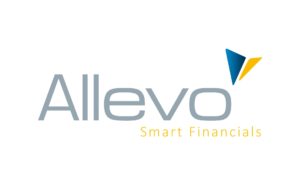Success Story – global manufacturer with multiple lines of business and dozens of facility locations .
With Allevo, they reduced their planning cycle time by 60-65% by eliminating steps that were not adding value. Time previously spent on tedious data extraction, transformation, loading and reconciliation was now available for more value-add analysis and optimization efforts.
Moreover, better data quality and timeliness has improved reporting, allowing for better analysis and insight, which ultimately boosts overall business performance. By managing what matters, the result is measureable and valid to your business.
Success Story Food & Beverage Conglomerate –
The results achieved covered both a cycle time reduction of over 50% as well as significant improvement to data and process quality. As a result, this customer was able to move from annual to quarterly – and in some areas monthly – planning, since Allevo’s real-time bi-directional integration with SAP eliminated the lengthy and cumbersome ETL process.
This real-time integration also allows planners to see how certain changes affect the results in financial statements, something that was impossible before. Planners now have the ability to create multiple budgets quickly and can model scenarios with different underlying assumptions.
Finally, Allevo was able to provide the flexible reporting needed to cover the needs of all eight business units as well as satisfy some pretty tricky legal and regulatory requirements.
The Reporting , Analytics, and Planning Edge
Over 64,000 companies rely on SAP to manage their business operations, making it the most widely used ERP platform in the world. If you work in finance for one of these companies, you know how powerful and effective SAP is. If your role includes budget planning and forecasting, you can also attest to how difficult and painful this process can be in SAP. A transactional system, SAP can make it difficult to aggregate and consolidate data, create projections, and deliver views able to provide the insight needed for effective analysis and decision-making. Moreover, the system can be very inflexible and its user interface far from intuitive.
This is where Allevo comes in. Allevo takes the tedium out of complex budgeting, reporting and analytics processes, allowing professionals to work within their familiar planning environment – such as Excel worksheet – while providing real-time access to all business data within SAP. An enterprise-level budget planning, forecasting, and reporting solution, Allevo integrates directly with SAP to provide planners with easy access to all data needed for effective planning and controlling.
Far more than just a data integration tool, however, Allevo also provides well-structured processes and workflows so users can keep track of budgeting processes and efficiently map even complex budgeting structures. Thanks to the optimization Allevo provides,
- decision makers are better informed,
- the workload of the planning team is greatly reduced, and
- the overall data and analysis quality vastly improves.

Risk-Free Trial
Confident in our technology and value proposition, Allevo offers prospective clients not only customized demos but also a one-day workshop and 60-day trial of their solution free of charge. This makes the decision for Allevo virtually risk-free since clients can test the software in their own environment, using their own data, processes, and planning worksheets to ensure it meets their needs before they commit to a purchase.
Ready for More Information ? Contact Us


















